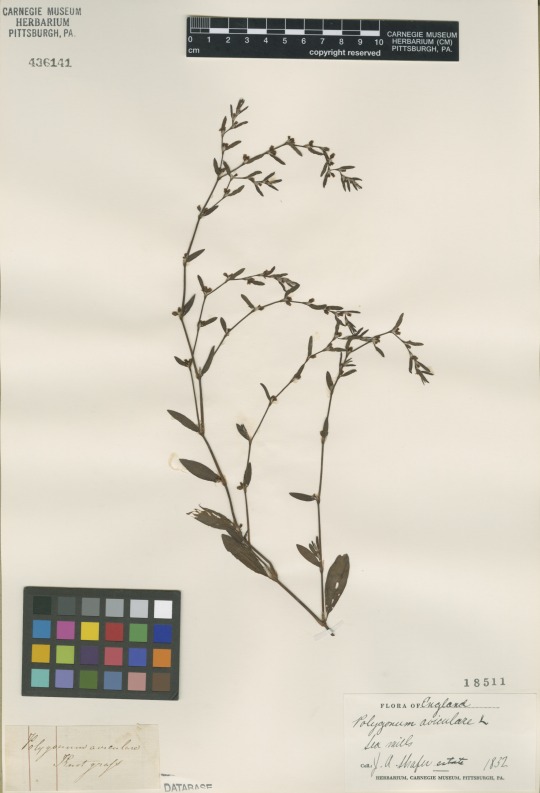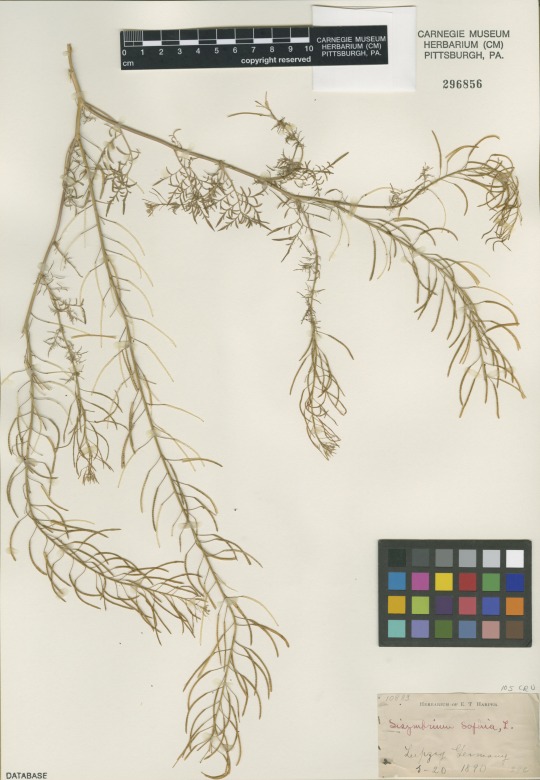By Mason Heberling
“This is the most complicated potion I’ve ever seen. Lacewing flies, leeches, fluxweed, and knotgrass. Well, they’re easy enough.” –Hermione Granger
Polyjuice potion was one of the most critical potions in the Harry Potter series. Polyjuice potion was difficult to concoct, but well worth the effort (and horrible taste). When brewed correctly, it allows the drinker to take the form of another person (or in the case of Hermione’s accidental brew…a cat).
As explained in the books, polyjuice potion is a complex mixture, that takes about a month to concoct. For obvious reasons, the recipe is found in the Restricted Section of Hogwart’s Library.
Two of the ingredients are, in fact, real plants!

Shown here is “flixweed” (Descurainia Sophia), a plant in the mustard family (Brassicaceae), native to Europe and temperate Asia. This specimen was collected in 1890 in Germany.
Another plant, crucial to Polyjuice potion, is “knotgrass.” Knotgrass (or more commonly known in the US, “knotweed”) refers to species in the genus Polygonum in the buckwheat family (Polygonaceae). Shown here is a specimen of common knotgrass (Polygonum aviculare), collected in England in 1832. This was 49 years before Dumbledore was even born!

We don’t know who collected this specimen, but perhaps it was Nicolas Flamel, said to have made the sorcerer’s stone, who was 505 years old in 1832.
Learn more about Potions, Herbology, Care of Magical Creatures, and more at our upcoming 21+ Potterfest After Dark and brand new all ages Potterfest Theme Night.
